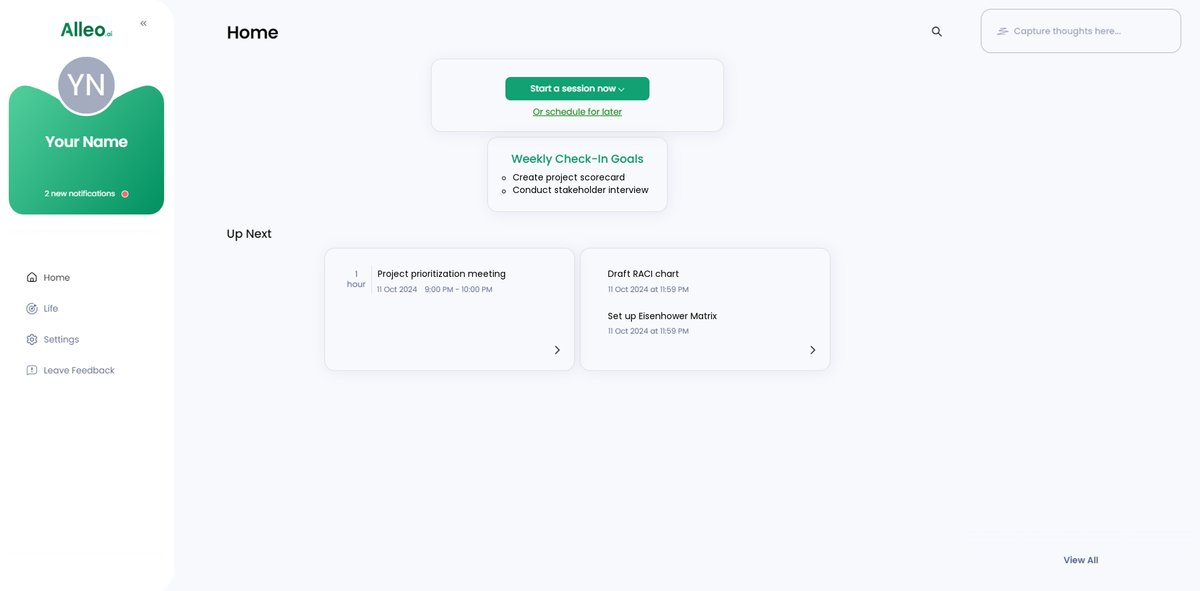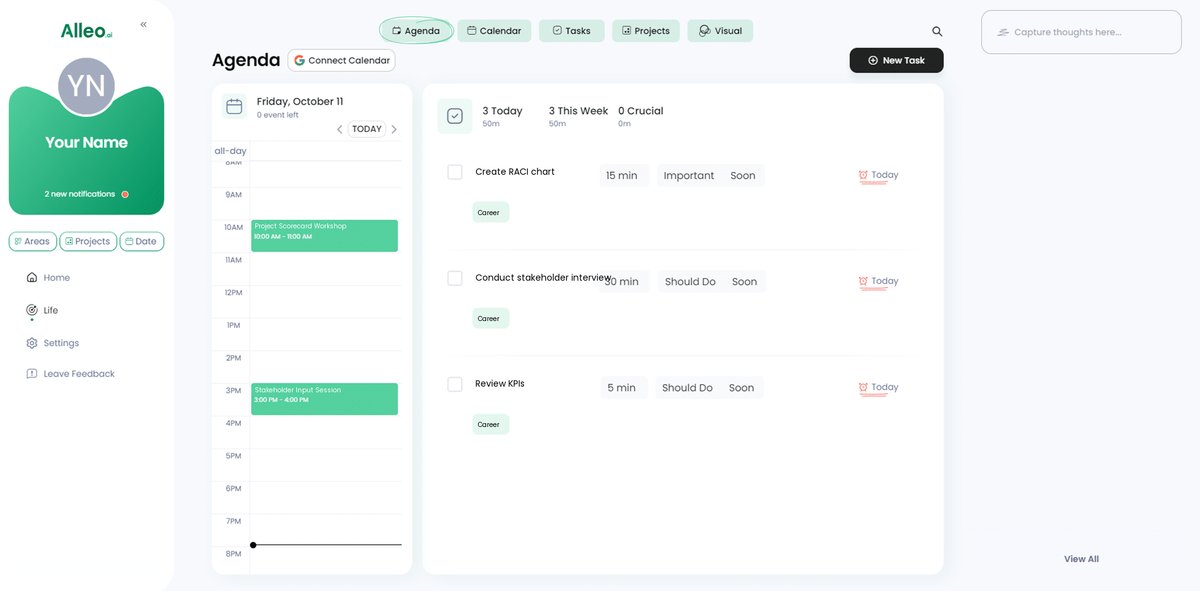The Ultimate Guide: 5 Strategies for IT Managers Balancing Multiple Project Priorities
Are you struggling to balance different perspectives when prioritizing IT projects? Effective IT project prioritization strategies are crucial for success in today’s competitive landscape.
As a life coach, I’ve helped many professionals navigate these challenges. In my experience supporting clients in competitive industries, I often encounter prioritization struggles related to IT portfolio management and resource allocation in IT projects.
In this article, you’ll discover actionable IT project prioritization strategies like implementing a Project Scorecard, using the Eisenhower Matrix for multi-criteria decision analysis, and conducting stakeholder interviews for improved stakeholder management in IT projects. We’ll also cover establishing clear KPIs as performance metrics for IT project success and creating a RACI chart for effective project prioritization techniques.
Let’s dive in to these IT project prioritization strategies.

The Complexity of Balancing Project Prioritization
Managing multiple projects can be a daunting task. Many IT managers often feel overwhelmed by the need to balance differing perspectives when implementing IT project prioritization strategies.
In my experience, people often find themselves juggling projects with varying impacts, complexities, and risks. This can create significant stress, highlighting the importance of effective resource allocation in IT projects.
Imagine a scenario where leadership wants quick wins, developers focus on technical debt, and business analysts prioritize long-term value. This lack of alignment can derail effective project management and IT portfolio management efforts.
Finding a fair and balanced evaluation method is crucial. It helps ensure all voices are heard and objectives are met. Multi-criteria decision analysis and project prioritization techniques can aid in this process.
By understanding these complexities, you can better navigate project prioritization challenges and lead your team more effectively, utilizing risk assessment for IT managers and stakeholder management in IT projects.

Strategic Approach to Balancing Project Evaluation
Overcoming this challenge requires a few key steps. Here are the main areas to focus on to make progress in IT project prioritization strategies:
- Implement a Project Scorecard with Weighted Criteria: Develop criteria for scoring projects and assign appropriate weights, utilizing IT project scoring models.
- Use Eisenhower Matrix for Urgency-Importance Balance: Categorize projects based on urgency and importance, a crucial aspect of project prioritization techniques.
- Conduct Stakeholder Interviews for Diverse Input: Gather insights from key stakeholders to understand different perspectives, enhancing stakeholder management in IT projects.
- Establish Clear KPIs Aligned with Business Goals: Define and communicate KPIs to align with strategic goals, focusing on performance metrics for IT project success.
- Create a RACI Chart for Role Clarity in Scoring: Define roles and responsibilities in the project evaluation process, supporting effective IT portfolio management.
Let’s dive into these IT project prioritization strategies!
1: Implement a Project Scorecard with weighted criteria
Implementing a Project Scorecard with weighted criteria is crucial for balancing varied project evaluation factors in IT project prioritization strategies.
Actionable Steps:
- Define criteria for scoring projects: Identify key factors such as impact, time savings, complexity, and risk for IT portfolio management.
- Assign weights to each criterion: Base weights on their importance to the organization’s strategic goals using multi-criteria decision analysis.
- Regularly review and adjust criteria: Ensure they reflect changing business priorities and project demands in resource allocation for IT projects.
Explanation: These steps help ensure a balanced and fair evaluation process, considering all key perspectives in IT project prioritization strategies.
Regular adjustments keep the scorecard relevant as business priorities evolve. A structured approach like this aligns with best practices in project prioritization techniques and risk assessment for IT managers.
According to ProjectManager.com, using weighted criteria aids in making informed project decisions.
Key benefits of implementing a Project Scorecard include:
- Improved objectivity in project evaluation
- Better alignment with organizational goals
- Enhanced consistency in decision-making for IT project scoring models
By following these steps, you can create a comprehensive and adaptable project evaluation system for IT project prioritization strategies.

2: Use Eisenhower Matrix for urgency-importance balance
Using the Eisenhower Matrix helps prioritize IT projects based on urgency and importance, ensuring efficient resource allocation in IT projects.
Actionable Steps:
- Categorize projects: Sort all current IT projects into the four quadrants of the Eisenhower Matrix (urgent and important, not urgent but important, urgent but not important, neither urgent nor important) as part of your IT project prioritization strategies.
- Prioritize and delegate: Focus on projects in the “urgent and important” quadrant while scheduling or delegating other tasks accordingly, utilizing project prioritization techniques.
- Reassess periodically: Regularly update the matrix to align with evolving project urgencies and importances, incorporating IT portfolio management practices.
Explanation: These steps will help you effectively manage project priorities, reducing stress and improving team productivity in IT projects.
By consistently reassessing, you ensure that the most critical projects receive attention. For further insights, consider reading this Smartsheet guide on managing multiple projects efficiently.
This method keeps your team focused on what truly matters, driving better outcomes and smoother workflows in IT project prioritization strategies.

3: Conduct stakeholder interviews for diverse input
Gathering diverse perspectives from stakeholders is crucial for balanced project evaluation and effective IT project prioritization strategies.
Actionable Steps:
- Schedule interviews: Plan one-on-one or group interviews with key stakeholders, such as leadership, developers, and business analysts, to inform your project prioritization techniques.
- Prepare questions: Develop targeted questions to uncover insights about project priorities, challenges, and expectations, aiding in IT portfolio management.
- Document feedback: Record and analyze the feedback to identify common themes and differing opinions, supporting multi-criteria decision analysis.
Explanation: These steps ensure comprehensive input, helping you align project priorities with organizational goals and improve resource allocation in IT projects.
Gathering diverse insights leads to better decision-making and enhances stakeholder management in IT projects.
For further reading, check out this guide on effective decision-making in project management.
This approach ensures all stakeholders’ views are considered, leading to more effective IT project prioritization strategies and evaluation methods.

4: Establish clear KPIs aligned with business goals
Establishing clear KPIs aligned with business goals is crucial for effective IT project prioritization strategies and evaluation.
Actionable Steps:
- Define specific KPIs: Identify measurable KPIs that reflect the organization’s strategic goals and support IT portfolio management.
- Communicate KPIs effectively: Ensure all team members understand these KPIs and their importance in project prioritization techniques.
- Monitor and adjust KPIs: Regularly review KPIs and adjust project priorities based on performance metrics for IT project success.
Explanation: These steps help maintain focus on strategic objectives and improve decision-making in IT project prioritization strategies.
Consistently monitoring and adjusting KPIs ensures alignment with business goals, promoting better project outcomes and resource allocation in IT projects. For further insights, explore this Investopedia guide on strategic management performance metrics.
Key elements of effective KPIs for IT project prioritization strategies:
- Specific and measurable metrics for multi-criteria decision analysis
- Direct link to organizational objectives and risk assessment for IT managers
- Regular performance tracking and reporting for agile project evaluation methods
This approach ensures your projects stay aligned with the organization’s vision, driving success and efficiency in IT project prioritization strategies.

5: Create a RACI chart for role clarity in scoring
Creating a RACI chart ensures clear role definitions in your IT project prioritization strategies, enhancing accountability and efficiency in project scoring models.
Actionable Steps:
- Identify all roles: Determine all participants involved in the project evaluation process, including who is Responsible, Accountable, Consulted, and Informed for IT portfolio management.
- Create the RACI chart: Map out each role’s responsibilities in the project scoring process, ensuring clarity and avoiding overlaps in resource allocation for IT projects.
- Review and update regularly: Ensure the chart remains relevant by periodically reviewing and updating it to reflect any changes in roles or responsibilities, considering stakeholder management in IT projects.
Explanation: These steps provide a structured approach to defining roles, which is crucial for effective project management. Clear role definitions help prevent confusion and streamline project evaluation using multi-criteria decision analysis.
For more insights on effective project management, consider reading this ProjectManager.com guide.
Benefits of using a RACI chart:
- Improved communication and collaboration
- Reduced conflicts and misunderstandings
- Enhanced project efficiency and accountability
This clarity in roles ensures everyone knows their responsibilities, leading to a more organized and efficient evaluation process for IT project prioritization strategies.
Partner with Alleo for Effective Project Prioritization
We’ve explored the challenges of balancing multiple project evaluation criteria in IT project prioritization strategies. Did you know you can work with Alleo to simplify this process and improve your IT portfolio management?
Setting up an account with Alleo is easy. Begin by creating a personalized plan tailored to your needs, incorporating various project prioritization techniques.
Alleo’s AI coach will guide you through implementing the Project Scorecard, Eisenhower Matrix, stakeholder interviews for IT projects, KPI establishment, and RACI chart creation. You’ll receive regular follow-ups on your progress in resource allocation and risk assessment for IT managers.
Alleo handles changes and keeps you accountable with text and push notifications, supporting your multi-criteria decision analysis efforts.
Ready to get started for free and enhance your IT project prioritization strategies? Let me show you how!
Step 1: Logging in or creating an account
To begin implementing effective project prioritization strategies with Alleo’s AI coach, simply Log in to your account or create a new one to get started on your personalized plan.

Step 2: Choose Your Focus Area
Select “Setting and achieving personal or professional goals” to align your project prioritization efforts with your overall career objectives, helping you tackle the challenges of balancing multiple IT projects more effectively.

Step 3: Select “Career” as Your Focus Area
Choose “Career” as your focus area to address project prioritization challenges, aligning with the article’s emphasis on balancing IT projects and improving professional decision-making skills.

Step 4: Starting a coaching session
Begin your journey with Alleo by scheduling an initial intake session, where you’ll collaborate with your AI coach to develop a personalized plan for implementing effective project prioritization strategies.

Step 5: Viewing and managing goals after the session
After your coaching session on project prioritization, check the Alleo app’s home page to view and manage the goals you discussed, such as implementing the Project Scorecard or creating a RACI chart.

Step 6: Adding events to your calendar or app
Use Alleo’s calendar and task features to schedule and track your progress on implementing project prioritization strategies, ensuring you stay on top of deadlines and milestones as you work towards balancing multiple evaluation criteria.

Bringing It All Together: Effective Project Prioritization
Balancing multiple project evaluation criteria is challenging, but it’s achievable. By following these IT project prioritization strategies, you can make informed decisions in IT portfolio management.
Remember, implementing a Project Scorecard and using the Eisenhower Matrix helps align priorities in resource allocation for IT projects. Stakeholder interviews and clear KPIs ensure all voices are heard, supporting effective stakeholder management in IT projects.
Creating a RACI chart defines roles, enhancing accountability and improving IT project scoring models.
Facing these challenges head-on will lead to better outcomes. As your coach, I know you can excel in IT project prioritization techniques.
Don’t forget, Alleo is here to support you. Ready to simplify your project prioritization? Try Alleo for free today to enhance your IT project prioritization strategies!